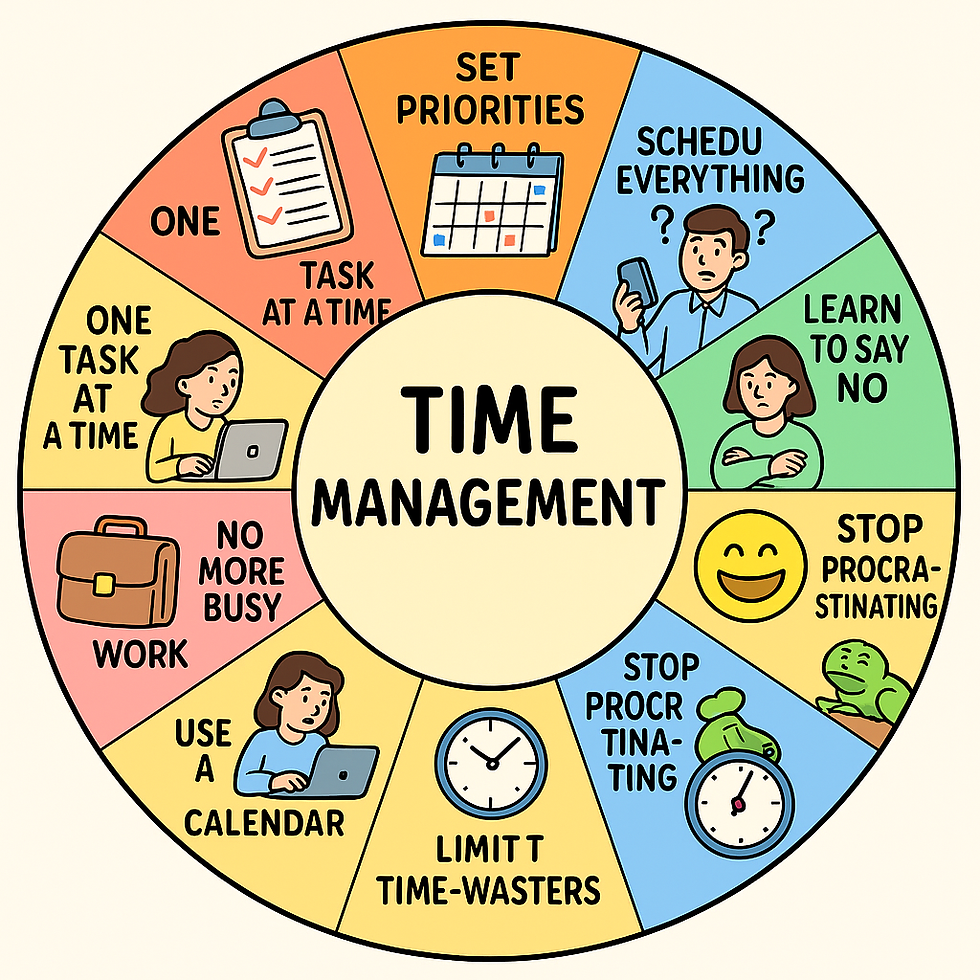Types of Employees in an Organization and How to Manage Them as Leader
- AiTech
- Aug 10, 2024
- 3 min read
In any organization, employees come with various personalities, work ethics, and skills. As a manager, understanding these different types of employees is crucial for effective team management. This blog will explore the common types of employees you may encounter and provide strategies for managing each type effectively.
1. The High Performer
Characteristics: High performers are motivated, driven, and consistently exceed expectations. They take ownership of their work and often take on additional responsibilities.
Challenges: They may become frustrated if they feel their efforts are not recognized or if they are not adequately challenged.
Management Strategies:
Recognition: Regularly acknowledge their hard work and achievements.
Opportunities for Growth: Provide opportunities for advancement, challenging projects, or leadership roles.
Open Communication: Ensure there is open communication about their career goals and aspirations.
Example: Sarah consistently delivers her projects ahead of schedule and often helps her peers. To keep Sarah motivated, her manager offers her the chance to lead a new, high-visibility project within the company.
2. The Mediocre Performer
Characteristics: Mediocre performers meet expectations but rarely exceed them. They do what is required but often lack enthusiasm or initiative.
Challenges: They may become complacent and resist taking on new responsibilities or improving their skills.
Management Strategies:
Clear Expectations: Set clear expectations and performance goals.
Encouragement: Encourage them to step out of their comfort zone by assigning tasks that challenge them.
Development Plans: Create development plans to help them improve their skills and grow professionally.
Example: John does his job well but never goes the extra mile. His manager discusses his potential career path and sets specific, measurable goals for John to work towards, offering support along the way.
3. The Underperformer
Characteristics: Underperformers consistently fail to meet expectations. They may lack the necessary skills, motivation, or understanding of their role.
Challenges: If not addressed, underperformance can lead to decreased team morale and productivity.
Management Strategies:
Identify the Root Cause: Determine why the employee is underperforming – it could be due to lack of skills, personal issues, or lack of clarity in their role.
Provide Support: Offer training, mentoring, or additional resources to help them improve.
Set a Performance Improvement Plan (PIP): Clearly outline the expected improvements, set deadlines, and regularly review progress.
Example: Lisa has been struggling to meet her sales targets. Her manager discovers she’s unclear about the sales process and offers her additional training and support. A performance improvement plan is set with clear milestones.
4. The Disengaged Employee
Characteristics: Disengaged employees lack motivation and passion for their work. They may frequently call in sick, miss deadlines, or show little interest in their tasks.
Challenges: Disengagement can be contagious, affecting team morale and overall productivity.
Management Strategies:
Engage in Open Dialogue: Have an honest conversation to understand the reasons for their disengagement.
Reignite Motivation: Find out what motivates them and try to align their tasks with their interests.
Reassign Roles: If possible, reassign them to a different role or project that better fits their skills and interests.
Example: Alex has been showing signs of disengagement, frequently missing deadlines and showing little interest in his work. His manager sits down with him to discuss his concerns and discovers Alex is feeling unchallenged. They agree on reassigning him to a new project that aligns more with his skills and passions.
5. The Conflict Creator
Characteristics: Conflict creators are often involved in workplace disagreements and may have a negative attitude that affects team dynamics.
Challenges: They can create a toxic work environment, leading to decreased team cohesion and productivity.
Management Strategies:
Address Issues Directly: Don’t ignore conflicts. Address issues directly and seek to understand the root cause.
Set Behavioral Expectations: Clearly communicate the expected behavior and the consequences of not adhering to them.
Mediation: If necessary, involve HR or a neutral third party to mediate conflicts.
Example: Emma has been clashing with her colleagues, leading to a tense work environment. Her manager arranges a meeting to discuss the issues and sets clear expectations for professional behavior moving forward. A mediation session is also scheduled to resolve ongoing conflicts.
Conclusion
Every organization is made up of a diverse group of employees, each with their own strengths and challenges. As a manager or Leader, understanding these different types of employees and implementing the appropriate management strategies is key to building a productive, motivated, and cohesive team. By recognizing and addressing the unique needs of each employee, you can create an environment where everyone can thrive.

Comments